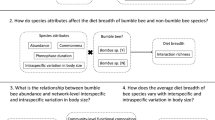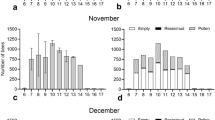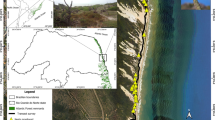Summary
Certain carpenter bees (Xylocopa) are characterized by cohabitation of several females in partly common nest structures and/or by the meeting, inside the nest, between adult offspring and their mother. Both conditions are considered to be a basis for social life in bees.
In X. pubescens intraspecific competition for nests and nest sites is prominent. Inhabited nests are sometimes usurped, although guarding may exclude females searching for a nest site. After taking over an existing nest the new female removes the brood present and uses the tunnels for her own brood rearing.
Emerged offspring are tolerated in the nest by the mother. The juveniles profit in two ways from the foraging by the mother: they receive nectar during trophallaxis and eat from the pollen after it has been unloaded. Young bees may guard the nest while the mother is out, which generally results in trophallaxis after the return of the mother. Trophallaxis with additional offspring is limited; guarding by juveniles is therefore considered to be the result of food competition between the juveniles rather than a novel behaviour pattern.
Similarly, the pollen collected by the mother and consumed by the juveniles does not imply a new behavioural programme in the mother but merely constitutes part of her cell provisioning behaviour. As long as her pollen harvest exceeds the consumption by her offspring she will be able to make additional brood cells.
Similar content being viewed by others
References
Anzenberger G (1977) Ethological study of African Carpenter bees of the genus Xylocopa (Hymenoptera, Anthophoridae). Z Tierpsychol 44:337–374
Ben Mordechai Y, Cohen R, Gerling D, Moscovitz E (1978) The biology of Xylocopa pubescens Spinola (Hymenoptera: Anthophoridae) in Israel. Isr J Entomol 12:107–121
Bonelli B (1976) Osservazioni eto-ecologiche sugli Imenotteri aculeati dell' Etiopia VIII Xylocopa (Mesotrichia) combusta Smith (Hymenoptera — Anthophoridae). Boll Entomol (Bologna) 33:1–31
Camargo JMF de, Velthuis HHW (1979) Sobre o comportamento de Xylocopa (Megaxylocopa) frontalis (Olivier) (Hymenoptera — Anthophoridae). Dusenia 11:35–39
Gerling D, Hurd PD Jr, Hefetz A (1981) In-nest behavior of the Carpenter bee, Xylocopa pubescens Spinola (Hymenoptera: Anthophoridae). J Kans Entomol Soc 54:209–218
Gerling D, Hurd PD Jr, Hefetz A (1982) Comparative behavioral biology of two Middle East species of Carpenter bees (Xylocopa Latreille) (Hymenoptera: Apoidea). Smithson Contrib Zool (Washington) 369 (in press)
Hurd PD Jr, Moure JS (1963) A classification of the large Carpenter bees (Xylocopini) (Hymenoptera, Apoidea). Univ Calif Publ Entomol 29:365
Michener CG (1974) The social behavior of the bees. Belknap Press, Harvard Univ Press, Cambridge (Massachusetts)
Rau P (1933) The jungle bees and wasps of Barro Colorado Island. Kirkwood, Mississippi (Phil Rau)
Watmough RH (1974) Biology and behaviour of Carpenter bees in Southern Africa. J Entomol Soc South Afr 37:261–281
Author information
Authors and Affiliations
Rights and permissions
About this article
Cite this article
Velthuis, H.H.W., Gerling, D. At the brink of sociality: Interactions between adults of the carpenter bee Xylocopa pubescens spinola. Behav Ecol Sociobiol 12, 209–214 (1983). https://doi.org/10.1007/BF00290773
Received:
Accepted:
Issue Date:
DOI: https://doi.org/10.1007/BF00290773




